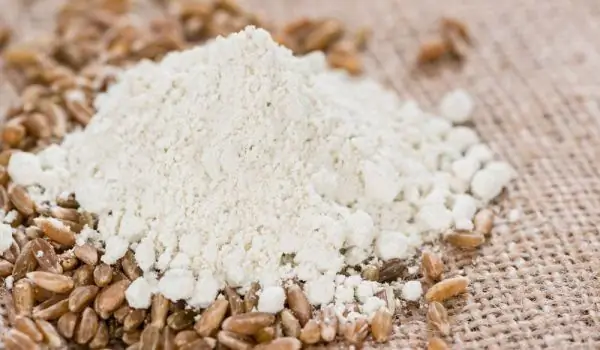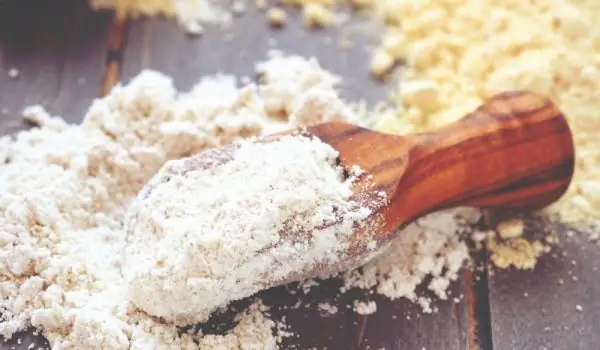2025 Author: Jasmine Walkman | [email protected]. Last modified: 2025-01-23 10:18
Chickpea flour is a gluten-free flour most commonly present in Indian cuisine. Over time, it managed to become a competitor to the widely used wheat flour and to establish itself as a worthy and affordable substitute.
Most often you can find it as a main ingredient in well-known foods such as hummus and falafel. When you hear chickpea flour, most of you will think that it is just ground chickpeas, but the truth is not exactly that.
There are several different types of this flour, and the main difference between them is that they are made from two different types of chickpeas. The first is the Kabuli variety, which is the most common type of chickpeas, colored in bright brown, and with which most people are familiar.
The second type of chickpeas is the Desi variety, which has smaller and coarser grains. It is available in darker colors that go from green to brown and almost black, depending on when the seeds are harvested.
The traditional kind of chickpea flour, sometimes called besan, is made from the brown version of Desi chickpeas, also known as Bengal chickpeas. To obtain the flour, the chickpeas are dried, the skin is removed and only the inner seed is separated.
The resulting split chickpeas are sometimes called chana dal, which can be a bit confusing, as the word dal often refers to lentils. Peeled and sliced chickpeas Desi strongly resembles a yellow lentil. In fact, lentils, peas and chickpeas come from the same botanical family, but are different species.

There are two main types of chickpea flour. The first is obtained by grinding the seeds of the Desi variety into a fine powder. This is the version also known as besan.
The second option is by grinding dried chickpeas from Kabul to obtain the more common and affordable flour.
Both products are similar, though not identical. Besan, which is made from Desi chickpeas, is finer and denser. In contrast, chickpea flour, made from the common and more affordable type of chickpeas, is coarser and fluffier.
The taste of both is similar, the main difference being the amount of liquid needed to make a dough of the same consistency. Besan requires less water from both species.
Chickpea flour can easily replace the standard thickeners in various recipes for baked dishes and the recently popular vegetable burgers, as a thickener for sauces, soups and stews, as well as for the preparation of various types of pasta and dough-based foods such as pancakes.
It is also a great ingredient to combine with other gluten-free flours to make different types of bread, cookies and muffins.
Recommended:
Flour

Bread and water are things that human nature requires, Seneca said. As the main raw material for bread, flour is one of the most ancient products that man uses for his diet. Traditionally, bakery products are among the favorite foods of Bulgarians.
Einkorn Flour - Essence, Benefits, Application

Einkorn is a type of cereal that dates back to ancient times. Due to its more difficult processing and not so easy cultivation, however einkorn has long been one of the most common cereals. The oldest remnants of einkorn date back 18,000 years.
How To Prepare Chickpea Flour Yourself?

Chickpeas are extremely useful. It is rich in protein and works wonders for cell repair. The huge amounts of vitamin E and zinc in it improve the functions of the immune system, and the isoflavones contained in the flour protect the body from tumors.
What To Cook With Buckwheat Flour

The beneficial properties of buckwheat flour are mainly associated with its rich content of iron, calcium, potassium, phosphorus, iodine, zinc, magnesium, manganese, fiber and amino acids. Buckwheat flour is still not a commonly used product in our country, unlike in Russia.
Lose Weight Easily While You Are Full With A Chickpea Diet

After consuming chickpeas Here are questions like: Does Chickpea Lose Weight? How many calories does it contain? Is he gaining weight from it? The chickpea diet is very easy. This means that between meals you can consume a small bowl of yellow or white chickpeas, without wondering if it is filled with it.

